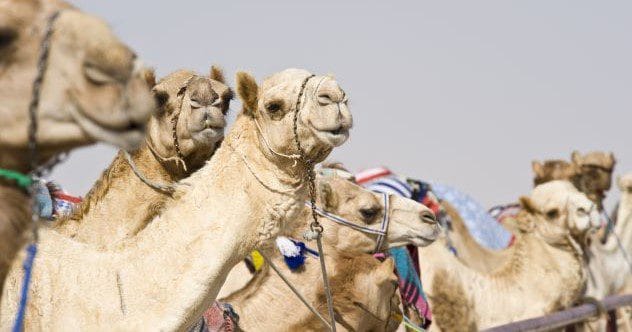From Star Wars to Jurassic Park, the concept of cloning has long captured the imagination. It’s now reality. Many have heard about Dolly the sheep, arguably the most famous cloned animal. But scientists have cloned many more interesting species since then for various reasons. Here are ten surprising animals that have been successfully cloned.
Cats
In 2001, a few years after Dolly the sheep, scientists cloned the first pet. A team of biomedical scientists at Texas A&M took cells from a cat called Rainbow, zapped them with electricity, let them grow, and transferred them into a surrogate mother. The result was C.C., short for Copy Cat or Carbon Copy. She was genetically identical to Rainbow, though she had a different coat pattern and temperament. She lived for 18 years until 2020.
Since then, the business of cloning pets has boomed, fueled by pet influencers. When a young cat with 85,000 Instagram followers died suddenly in 2017, its owner sent some of its skin cells to a pet cloning company and received a genetically identical clone four years later. Cloning companies claim cloned pets are essentially identical twins of the original animal.
Dogs
Celebrities have jumped on the pet cloning trend. In 2018, Barbara Streisand cloned her dog Sammie twice. That same year, a pet influencer had six clones of her Instagram-famous dog made after the original’s death. The ability to clone dogs dates back to 2005, when a South Korean research team produced Snuppy.
Snuppy was made using a single cell from an Afghan hound’s ear. He was the only long-term survivor out of 1,095 eggs implanted, making him a scientific marvel. Other teams struggled with a dog’s limited breeding period and egg extraction. Once they mastered it, South Korea began cloning dogs for drug-sniffing services in airports.
Arctic Wolves
Cloning can help endangered species survive. In 2022, scientists in Beijing presented Maya, the first surviving Arctic wolf clone. Maya, a grey-brown pup, was created using the same technique as Dolly the sheep.
Out of 85 cells implanted, Maya was the only survivor. While Arctic wolves are at low risk for extinction, climate change threatens their food supply, and human developments encroach on their habitat.
Black-Footed Ferrets
The first endangered U.S. animal was cloned in 2021. Black-footed ferrets dwindled so much that they were declared extinct in 1979. When a farmer found a small population in 1981, a breeding program began, but the species remained on the brink.
The population was so small that the breeding program struggled to achieve genetic diversity. Elizabeth Ann, the cloned ferret, came from cells of a ferret who lived 30 years earlier. Scientists hope she will diversify the highly endangered species. Without genetic diversity, animals are prone to diseases and abnormalities.
Bantengs
The first clone of an endangered species was a banteng, a wild cow native to Java. The clone was born in 2003, created using frozen tissue from a banteng that died over 20 years earlier. Out of 16 surrogate pregnancies, there were only two births, but the other banteng didn’t make it. Earlier efforts in 2001 to clone a gaur failed when the clone died after two days.
While some scientists doubted the clones’ health, the banteng researchers explained that the endangered population needed genetic diversity. If the clones can produce offspring, the project could help the species.
Przewalski’s Horses
Przewalski’s horses are considered the last truly wild horses. By 2020, they were extinct in the wild, surviving only in zoos and reserves. Like other endangered species, their numbers dwindled, lacking genetic diversity. All surviving Przewalski’s horses descend from the same 12 ancestors. Researchers at the Frozen Zoo in San Diego had cells of a Przewalski’s horse from 4 decades earlier among its 1,100 species.
The cells contained DNA rarely found in the surviving population. By fusing the cells with a surrogate mother’s egg, scientists created Kurt, the first clone of the species. Born in Texas in August 2020, he will hopefully be part of the plan to return Przewalski’s horses to the wild.
Pyrenean Ibex
Some clones are created using cells frozen decades ago, enabling the resurrection of extinct species. This happened in 2009 with the Pyrenean ibex, also known as a bucardo, a subspecies of Spanish ibex whose population had been decimated by hunting.
The last ibex died in 2000 after being hit by a falling branch, but his skin cells had been frozen. These were used to make 208 embryos, which were implanted into surrogate Spanish ibexes and goat-ibex hybrids. There was only one successful birth, but the clone had lung problems and died of respiratory failure minutes later.
Scientists say abnormalities are common when DNA is shifted between cells. They cautioned against thinking we can clone long-extinct species like the woolly mammoth, explaining that cloning requires a similar surrogate to carry the embryo.
Cows
Cows are one of the most successfully cloned mammal species, cloned for several reasons. By 2003, cows were being cloned and genetically engineered to produce milk with proteins needed to manufacture pharmaceuticals. The cheese-making industry also saw potential in genetically engineered clones.
In 2003, scientists from New Zealand created cow clones with higher-protein milk, which sped up cheese-making. They put extra genes for two milk proteins into the cow cells before implantation. Argentine scientists used a similar technique in 2011 to create Rosita ISA, a cloned cow that produced human-like milk, increasing the nutritional and anti-bacterial content of the milk.
Camels
Countries in Asia and the West weren’t the only ones involved in the cloning craze. In 2009, a female one-humped camel clone called Injaz was born in the UAE. She was genetically identical to a camel who died four years earlier. Researchers hoped to preserve the valuable genes of racing and milk-producing camels, a hope that became their full-time job by 2023.
The demand for camel clones is driven by camel beauty pageants. These contests are so popular in the Gulf states that prizes can be millions of dollars. Cloning camel beauty queens has become a big business, along with cloning racers and pets. They are also using cloning to help endangered species, such as wild two-humped Bactrian camels.
Monkeys
2000 saw the birth of the world’s first monkey clone. Cloning a primate was a significant advance, especially since Dolly the sheep was cloned only four years earlier. Tetra, the cloned monkey, was created by embryo splitting, replicating what happens naturally during pregnancy to produce twins, triplets, and quadruplets. This success raised ethical concerns about human cloning.
Cloning by embryo splitting can result in multiple genetically identical clones raised in highly controlled settings, making them excellent subjects for experiments. Closely related to humans, they could be valuable for studying human diseases and producing cures more quickly. However, many object to raising animals for experimentation, especially more cognizant ones like monkeys.
Conclusion
From pets to endangered species, cloning offers a range of possibilities. While it presents ethical considerations, it also holds promise for conservation and medical advancements. The journey of cloning continues to evolve, sparking both fascination and debate.
What are your thoughts on animal cloning? Leave your comment below!










